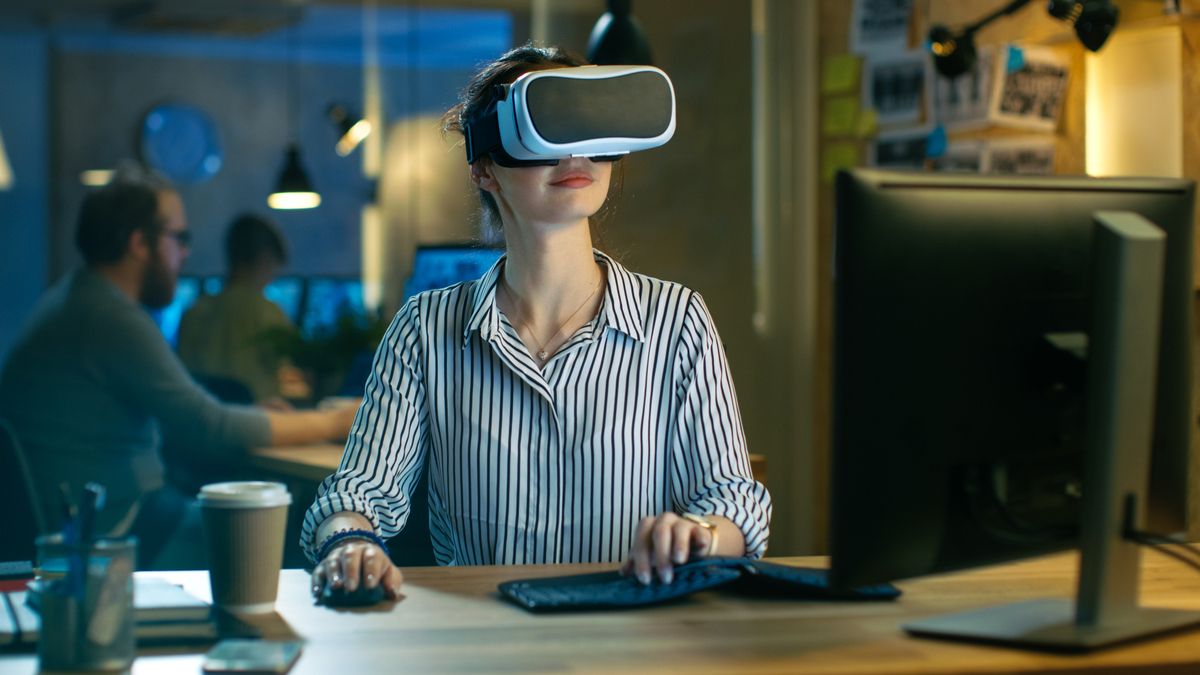
Virtual reality (VR) is the world created by means
of engineering tools and technologies, which a human can see, smell, touch and
hear just as well. It is an imitation of a real world. Augmented reality (AR)
is a technology, which works as a componential part of a real world through
adding any sensor data. Despite the names, these technologies are able to do
both bring and delete objects. Possibilities of AR are limited to the
possibilities of devices and programs only.
If
to speak about the difference between VR and AR, it is as follows:
VR blocks a real-world plunging a user into a
digital universe. If you put a straight headset on and turn out to be in the
middle of a fight with a zombie instead of a living room you were a second ago,
this is VR.
AR adds elements of a digital world into the real
one. If you walk down the street and there a Pokémon appears right in front of
your eyes, this is AR.
Morton Heilig is considered to be the father of
virtual reality. He took out a patent in the year 1962 the first in the world
virtual stimulator called Sensorama. It was a huge device looking like an
amusement machine of 80`s and let a user feel like plunging into virtual
reality, for example, to ride a motorcycle down the streets of Brooklyn. But
this invention caused mistrust among investors and Heilig had to stop working
on the device.
In a few years, Ivan Sutherland a professor of
Harvard University introduced a similar device, the sword of Damocles, which
was the first system of virtual reality based on a head-up display. The glasses
were attached to the ceiling and the picture could be seen through a computer.
CIA and NASA got interested in the technology despite rather a bulky invention.
VPL Research company developed more up-to-date
equipment for virtual reality in the 80`s. Those were EyePhone glasses and
DataGlove gloves. Jaron Lanier, a very talented inventor, was the founder of
the company who entered a university when he was 13. He was the one who came up
with the virtual reality term.
Augmented reality walked hand in hand with the
virtual one up until the year 1990 when a scientist Tom Caudell was the first
to suggest the augmented reality term. Louis Rosenberg developed one of
the earliest operating systems of the augmented reality for BBC USA.
Rosenberg`s exoskeleton made it to where soldiers could run machines virtually
being in a remote control center. There were other inventions in the 90`s. An
Australian Julie Martin combined virtual reality with television. This was the
time when developments of play stations based on VR began.
Even though possibilities of virtual reality are
unavailable for a mass-market customer, famous companies concern themselves in
development of these technologies up a hill and down dale. New York Times is
one of the investors too. It creates 360 Degree videos, which won The Cannes
Lions festival. Other huge players in the market contributed as well. Sony
company, for example, bought SoftKinetic Systems space gesture identification
system designer back in the year 2015 and Samsung announced about $ 6 Mio
investment into American Baobab Studios startup, which is specialized on
animated virtual reality. Big companies release VR straight headset of their
own designing exclusive games and software for them only. Everything can change
if the manufacturers begin to interact with each other, share experience,
popularize VR technologies. This is why Global Virtual Reality Association was
founded at the end of the year 2016, which is meant to do everything concerning
VR. Acer, Google, HTC, Facebook, Samsung, Sony and other went into the
association.
Virtual reality is a branch in which infrastructure
and technologies are developed combining with the content. If there are glasses
and helmet, there should be something to look at by means of them. Which is why
a few directions are there in accordance with content and sphere of
application.
- Games
- Movies
- Sports
translations and show
- Social
networks
- Marketing
- Education
- Medicine
- Trade
and real estate
- Industry
and arms
Virtual and augmented realities were meant for
medical and military purposes at first. Soon enough they began progressing in
the sphere of games. There are different expectations given by experts on what
is going to be next.
About the author: Melisa Marzett is a guest poster with a huge
experience despite her young age. Working for http://smartessayrewriter.com she provides with explicit and vivid works, which are
a pure delight to read. Writing has always been her passion and as an
enthusiastic reader herself, she knows how to make a reader stay instead of
leaving the page.

0 coments ::
Post a Comment